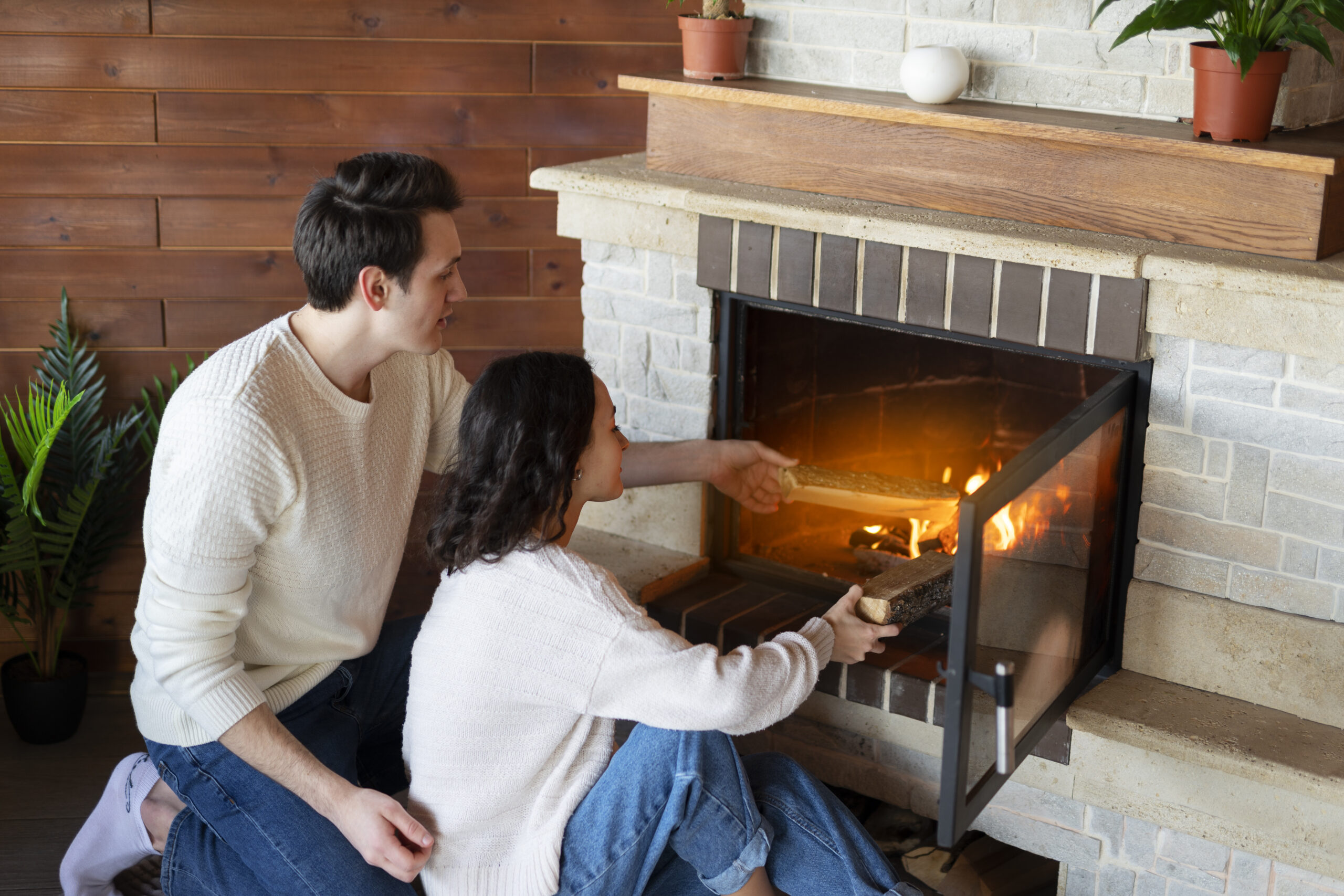Ultimate Guide to Fireplaces: Types, Installation, and Maintenance
Fireplaces have been a focal point of homes for centuries, providing warmth, comfort, and a sense of coziness. Whether you’re considering installing a new fireplace or looking to maintain your existing one, this ultimate guide will walk you through the various types of fireplaces, the installation process, and essential maintenance tips to ensure your fireplace remains a safe and efficient source of heat.
- Types of Fireplaces
- Wood-Burning Fireplaces
- Maintenance
- Gas Fireplaces
- Electric Fireplaces
- Ethanol Fireplaces
- Planning and Permits
- Choosing the Right Location
- Constructing the Firebox and Chimney
- Venting
- Installation of Fireplace Unit
- Finishing Touches
- Maintenance Tips
- Regular Cleaning
- Chimney Inspection
- Gas and Electric Fireplace Checks
- Safety Precautions
Types of Fireplaces
Wood-Burning Fireplaces
Wood-burning fireplaces are classic and timeless. They provide a rustic, traditional charm that many homeowners adore. However, they require regular maintenance and can be less energy-efficient compared to other options. To install a wood-burning fireplace:
Choose the right location, typically against an exterior wall with a chimney route.
Construct a firebox and chimney.Install a fireproof hearth and a damper for controlling airflow.Adhere to local building codes and safety regulations.
Maintenance:
Regularly clean the chimney to prevent creosote buildup.Inspect the firebox and chimney for cracks or damage.
Gas Fireplaces
Gas fireplaces offer convenience and energy efficiency. They can be easily controlled with a switch or remote, providing instant warmth and ambiance. To install a gas fireplace:
Determine the location and venting options.Install the gas line and appropriate venting.
Choose the type of gas logs or inserts.Install the fireplace unit and connect it to the gas line.
Maintenance:
- Clean the glass regularly.
- Check for gas leaks and ensure the pilot light is working correctly.
Electric Fireplaces
Electric fireplaces are the most versatile and low-maintenance option. They don’t require venting and can be installed virtually anywhere with an electrical outlet. To install an electric fireplace:
- Choose the location and style of the fireplace.
- Plug it into a standard electrical outlet.
Maintenance:
- Wipe down the glass and interior to remove dust.
Ethanol Fireplaces
Ethanol fireplaces are eco-friendly and don’t require a chimney or gas line. They use bioethanol fuel, which burns cleanly without producing smoke or soot. To install an ethanol fireplace:
- Select a suitable location and style.
- Fill the burner with bioethanol fuel.
- Ignite the flames with a long lighter.
Maintenance:
- Ensure the burner is clean and free of debris.
- Handle ethanol fuel with care.
Installation Process
Planning and Permits
Before installing a fireplace, you’ll need to obtain the necessary permits and comply with local building codes and regulations. Consult with a professional to assess the feasibility of your fireplace project.
Choosing the Right Location
The location of your fireplace should consider aesthetics, functionality, and safety. It should be positioned away from flammable materials and have proper clearance from walls and ceilings.
Constructing the Firebox and Chimney
The construction of the firebox and chimney depends on the type of fireplace you choose. For wood-burning fireplaces, you’ll need to build a fireproof enclosure and chimney. Gas and electric fireplaces may require framing and venting.
Venting
Proper venting is crucial for safety and efficiency. Ensure that gas and wood-burning fireplaces have adequate flue systems to remove combustion byproducts and maintain indoor air quality.
Installation of Fireplace Unit
Carefully follow the manufacturer’s instructions for installing your chosen fireplace unit. Gas and electric fireplaces often require professional installation to ensure safety and compliance.
Finishing Touches
Complete the installation by adding the finishing touches, such as a mantel, surround, or hearth, to enhance the aesthetic appeal of your fireplace.
Maintenance Tips
Regular Cleaning
Regardless of the type of fireplace, regular cleaning is essential. Remove ash and debris from wood-burning fireplaces, clean the glass on gas fireplaces, and wipe down the interior of electric fireplaces.
Chimney Inspection
If you have a wood-burning fireplace, schedule an annual chimney inspection and cleaning to prevent creosote buildup and potential chimney fires.
Gas and Electric Fireplace Checks
Test the safety features of gas fireplaces, such as the pilot light and gas valve, and ensure the electric fireplace’s electrical components are in good working order.
Safety Precautions
Always follow safety precautions, including using a screen or glass enclosure to prevent sparks and embers from escaping, and keep flammable materials away from the fireplace.
Fireplaces are not only a source of warmth but also a focal point that adds character and charm to your home. Whether you opt for the classic wood-burning fireplace, the convenience of a gas or electric unit, or the eco-friendliness of an ethanol fireplace, proper installation and regular maintenance are key to enjoying a safe and efficient fireplace for years to come. Consult with professionals when needed, and always prioritize safety in your fireplace endeavours.

Post Comment